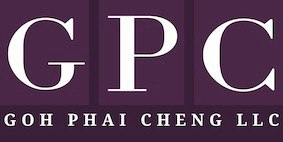8 January 2013, Singapore. Pharmaceutical companies would do well to be aware of the latest patent case—Novartis AG and another v Ranbaxy (Malaysia) Sdn Bhd [2012] SGHC 253, decided on 28 December 2012. This case sheds more light on section 12A (3)(a) of the Medicines Act (Cap 176, Rev Ed 1985), the purpose of which was to inform a patent drug owner that the products which another drug company intended to import for marketing in Singapore could potentially infringe its patent, and that the patent drug owner ought to commence the necessary action before the High Court within 45 days to assert its rights under its patent and to obtain the necessary relief from the court, failing which the relevant product licences would be granted to the other drug company.
This case is the first in Singapore whereby a patent drug owner invoked sections 83, 83(1) and 84(3) of the Singapore Patents Act to amend its patent specifications in its action against another drug company in response to the latter’s notices pursuant to section 12A(3)(a) of the Medicines Act (“section 12A Notification”).
In brief, the patent in issue is titled “Use of AT-1 Receptor Antagonist or AT-2 Receptor Modulator for treating diseases associated with an increase of AT-1 or AT-2 Receptors”, application number SG200305638-9, priority date 23 December 1998, with its patent term expiring only in 2018. The patent relates to how valsartan, a known active agent, is delivered to and absorbed by the human body (not the compound of valsartan for which a separate patent subsists). The Plaintiff is Swiss giant drug company Novartis AG while the Defendant is Ranbaxy (Malaysia), a wholly owned subsidiary of Ranbaxy Laboratories Limited, a leading Indian public-listed manufacturer of generic drugs. In seeking to import for marketing in Singapore Starval Tablets, of various compositions, which relate to the Plaintiff’s patent, the Defendant was obliged to serve section 12A Notification on the Plaintiff, who then sought declarations of infringement with respect to its patent.
The Defendant cited 2 pieces of prior art to invalidate the Plaintiff’s patent. However, the Plaintiff applied successfully for leave to amend its patent claims to “enhance clarity, to highlight the inventive contributions of the Patent and to reduce the number of claims”, as well as to “further distinguish the claims in [the Patent] from the matter disclosed in the … references … cited by the Defendant in its Defence and Counterclaim and Particulars of Objections”.
While the court has discretion to grant leave to amend the specifications of a patent, such discretion is subject to section 84(3) of the Act, which provides that:
(3) No amendment of the specification of a patent shall be allowed under section 38(1), 81 or 83 if it —
(a) results in the specification disclosing any additional matter; or
(b) extends the protection conferred by the patent.
In this case, only section 84(3)(a) is relevant.
The judge, in determining whether the amendments to a patent’s specifications would disclose additional matter, applied the test laid down in the oft-cited case of Bonzel (T) and anr v Intervention Limited and anr (No 3) [1991] RPC 553 (“Bonzel”) at p 574, as follows:
… The task of the Court is threefold:
(1) To ascertain through the eyes of the skilled addressee what is disclosed, both explicitly and implicitly in the application.
(2) To do the same in respect of the patent as granted.
(3) To compare the two disclosures and decide whether any subject matter relevant to the invention has been added whether by deletion or addition. The comparison is strict in the sense that subject matter will be added unless such matter is clearly and unambiguously disclosed in the application either explicitly or implicitly.
In my view, when deciding whether or not to apply for product licence from the Singapore Health Sciences Authority, one should be well advised to recognise that the Medicines Act section 12A is “admittedly pro-patentee for an applicant for a product licence is virtually forced to reveal the composition of its products upon the taking out of an action by the plaintiff” (AstraZeneca AB (SE) v Sanofi-Aventis Singapore Pte Ltd [2012] SGHC 16 at [48]). Furthermore, should he raise prior art that anticipated the patent, he must consider the possibility that the patent owner may be allowed to amend its patent specification based on that prior art, subject to the conditions above being met.
One can understand section 12A of the Medicines Act better if one appreciates its historical context. It was first introduced into the Medicines Act in 2004 mainly to fulfill certain obligations arising from the United States-Singapore Free Trade Agreement conducted in 2003. Apart from this obligation, Singapore was also reinventing itself as a medical and research and development (R&D) hub. The safeguarding of rights on patented drugs was a priority.
Nine years on, these efforts have borne fruit. Eight of the top ten pharmaceutical companies in the world, including AstraZeneca, Bayer and Sanofi-Aventis, have established international or regional headquarters in Singapore (as reported in the Biotech Guide 2011/2012 in an article by the Singapore Economic Development Board). Top biomedical companies, such as GlaxoSmith Kline, Novartis, Merck Sharp & Dohme and Roche, are just a few companies that have integrated their essential business activities across regional headquarters, R&D and manufacturing activities in Singapore. With so many pharmaceutical giants on our shores, I would be surprised if this is the last we hear of section 12A Notifications.
